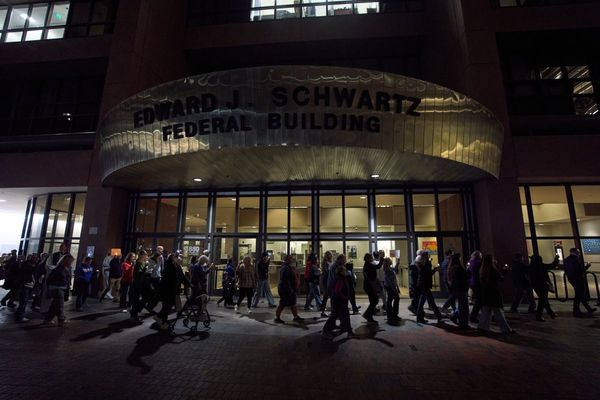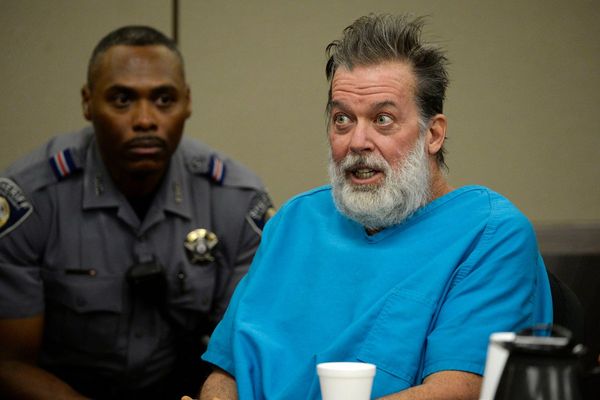
We tend to believe there is safety in numbers, that a crime committed in broad daylight before a crowd of witnesses would be instantly noticed and stopped. Yet history is filled with astonishing cases where audacious criminals exploited the very presence of people to their advantage. They rely on distraction, misdirection, and a phenomenon known as the bystander effect, where everyone assumes someone else will intervene. These incidents prove that crowds don’t always offer protection; sometimes, they provide the perfect cover. The following are shocking examples of unnoticed crimes that unfolded in plain sight.
1. The Assassination of Kim Jong-nam
In 2017, the half-brother of North Korea’s leader was assassinated in a busy Malaysian airport terminal. Two women approached Kim Jong-nam and smeared a VX nerve agent, one of the deadliest chemical weapons in the world, on his face. The attack was so swift and bizarre that surrounding travelers barely registered it, likely mistaking it for a prank. This brazen act demonstrates how a well-planned crime can be executed amidst hundreds of people, becoming one of history’s most chillingly public unnoticed crimes.
2. Flash Mob Robberies
A modern and alarming trend involves large, coordinated groups swarming high-end retail stores. These “flash mobs” overwhelm staff and security by rushing in simultaneously, grabbing merchandise, and fleeing within minutes. The sheer chaos and number of people involved make it nearly impossible for onlookers or employees to intervene or identify specific individuals. The crime is over before the crowd can fully process what has happened. This tactic turns the strength of a group into a criminal weapon.
3. The Murder of Kendra Hatcher
In 2015, Dallas dentist Kendra Hatcher was murdered in the parking garage of her upscale apartment building. The crime occurred in a busy, well-lit area as residents were coming home from work. The carefully planned murder-for-hire was executed quickly, and while people were nearby, no one witnessed the actual event clearly enough to stop it. The case highlights how even in seemingly safe, populated environments, determined criminals can find a window to strike.
4. Pickpocketing Syndicates in Tourist Hotspots
In crowded tourist destinations like Times Square or the Eiffel Tower, professional pickpocketing rings operate with near invisibility. They often work in teams, using sophisticated distraction techniques like bumping into a target, asking for directions, or staging a fake argument. While one member creates the diversion, another lifts the wallet or phone, immediately passing it to a third person who disappears into the crowd. For the victim and bystanders, it’s just another moment in a bustling city, not a carefully orchestrated crime.
5. The “Rolex Rippers” Gang
A notorious all-female gang in the UK specifically targeted wealthy, elderly men for their expensive watches. The women would pose as charity workers or friendly strangers, using charm and physical contact, like a hug or a handshake, to deftly remove a Rolex from the victim’s wrist. The victims were often unaware of the theft until much later, having mistaken the interaction for a pleasant encounter. These unnoticed crimes preyed on politeness and the assumption of goodwill in public spaces.
6. Staged Medical Emergencies for Theft
Criminals often exploit public empathy to their advantage. A common tactic involves one person faking a seizure or heart attack in a crowded area. As concerned citizens rush to help, an accomplice moves through the distracted crowd, stealing bags, wallets, and phones. The Good Samaritans are so focused on the “emergency” that they fail to notice the thefts happening right beside them. This cruel deception turns a crowd’s best instincts into an opportunity for crime.
7. The Disappearance of Lars Mittank
In 2014, German tourist Lars Mittank vanished after displaying paranoid behavior at an airport in Bulgaria. The last known sighting of him was on CCTV footage, where he is seen sprinting out of the airport, climbing a tall fence, and disappearing into a nearby sunflower field. Despite the airport being full of travelers, staff, and security, no one was able to stop or find him. While the exact crime is unknown, his disappearance from such a public place remains a baffling mystery.
8. The Gardner Museum Art Heist
While the 1990 Isabella Stewart Gardner Museum heist in Boston happened overnight, the thieves’ method relied on exploiting public trust. They dressed as police officers responding to a fake disturbance call, a disguise that granted them entry by the night watchmen. They were not questioned because their appearance in a place of authority provided the perfect cover. This deception allowed them to commit the largest property crime in U.S. history without immediate notice or resistance.
9. Child Abductions from Crowded Places
Tragically, child abductions have occurred in bustling parks, shopping malls, and beaches. Predators can exploit a moment’s inattention, and in a crowd, a child walking away with an adult may not raise immediate alarm. Onlookers might assume the person is a relative, a reluctance to interfere in what could be a family matter. This highlights a terrifying vulnerability and shows how even the most heinous unnoticed crimes can happen in full view of the public.
10. The Disappearance of Brian Shaffer
In 2006, medical student Brian Shaffer was last seen on security footage entering a bar in Columbus, Ohio. The bar had only one public entrance and exit, yet he was never seen leaving, even though cameras captured every other patron doing so. He vanished from inside a crowded establishment with no explanation. This case is a chilling example of how a person can disappear from a public place, leaving behind a mystery that endures to this day.
11. The Killing of Kitty Genovese
The 1964 murder of Kitty Genovese in Queens, New York, is the classic case study for the bystander effect. While initial reports of 38 witnesses who did nothing were exaggerated, it’s true that multiple people heard her screams but failed to act decisively. They either dismissed the sounds or assumed someone else had already called the police. Her death became a symbol of public apathy and the diffusion of responsibility that can occur in a crowd.
12. Thefts During Public Protests
Large-scale public demonstrations, while often peaceful, can provide cover for criminal activity. With police attention focused on crowd control, opportunistic thieves can target businesses or individuals. The chaos and anonymity of the crowd make it easy for perpetrators to blend in and escape unnoticed. These unnoticed crimes take advantage of moments of civic unrest, tarnishing the message of the legitimate protestors.
The Illusion of Collective Safety
These cases shatter the comforting illusion that being in a crowd makes us safe. They reveal that public spaces can provide a unique form of camouflage for those with criminal intent. By understanding the tactics of distraction, deception, and the psychological pitfalls of bystander inaction, we can become more aware of our surroundings. Being vigilant and willing to report suspicious activity is the true key to transforming a crowd from a hiding place into a genuine network of safety.
Have you ever witnessed something in public and only realized later that it might have been a crime? Share your story in the comments.
Read More:
8 Reasons Why Break-Ins Happen Most Often in Units With a Single Occupant
7 Safety Tips You’ll Only Understand After Someone Tries to Break In
The post Daylight Deceptions: 12 Crimes That Went Unnoticed Despite Crowds appeared first on Budget and the Bees.







